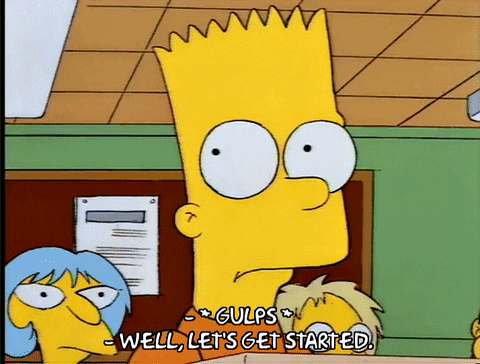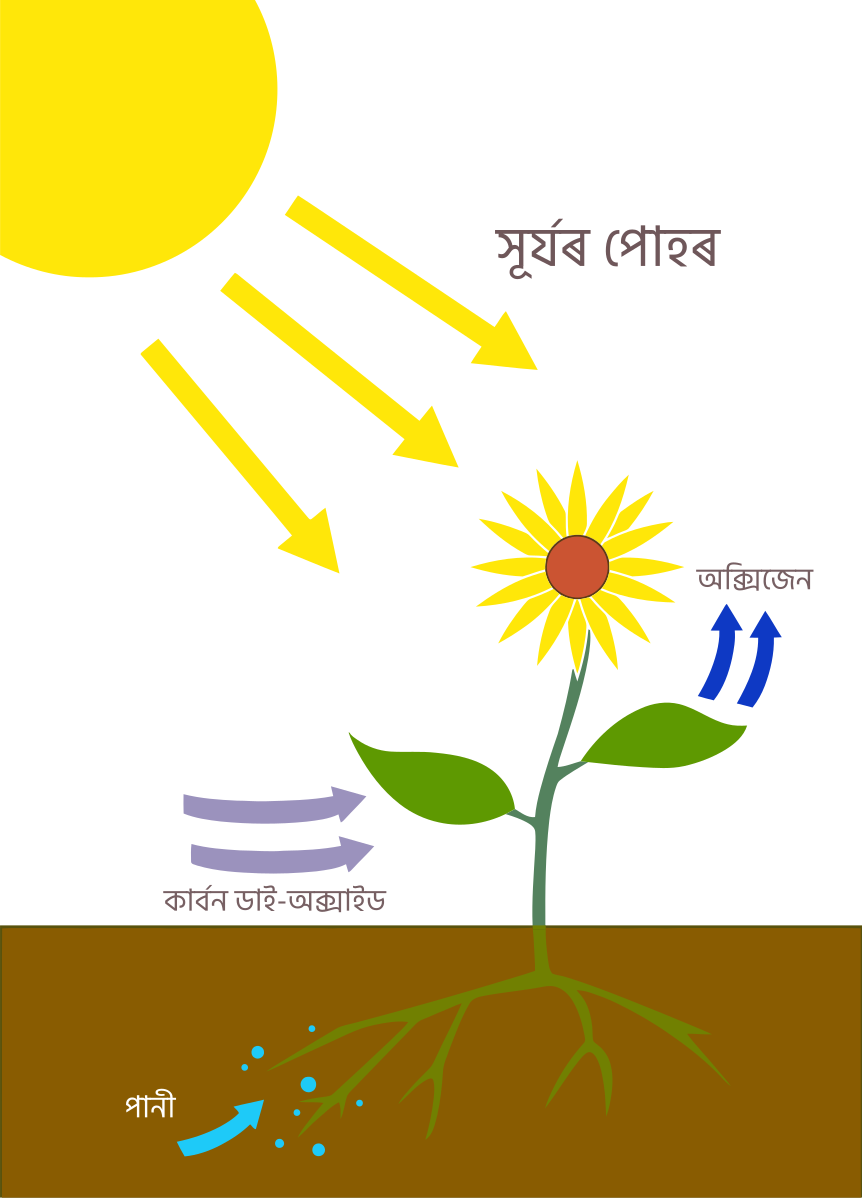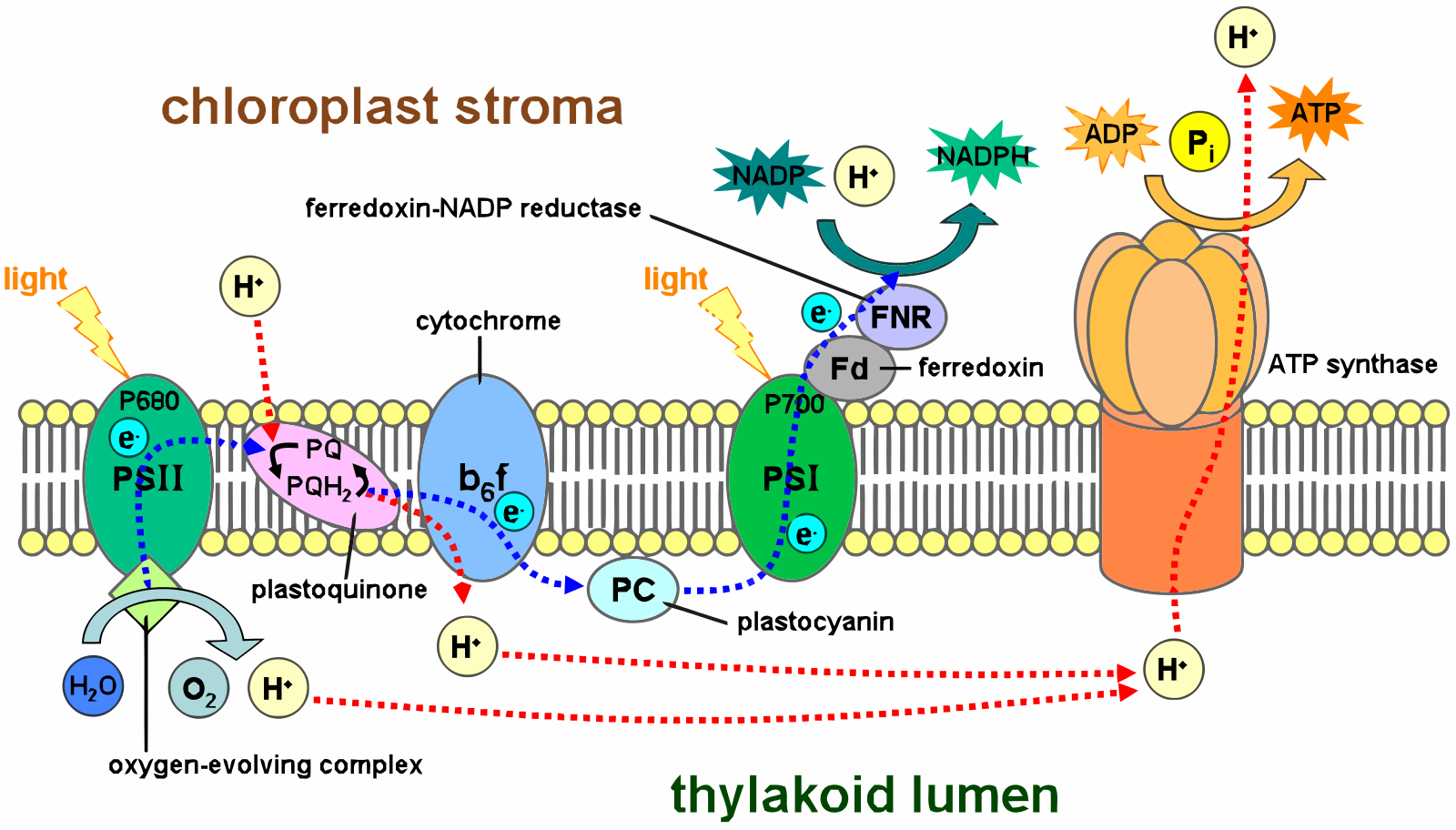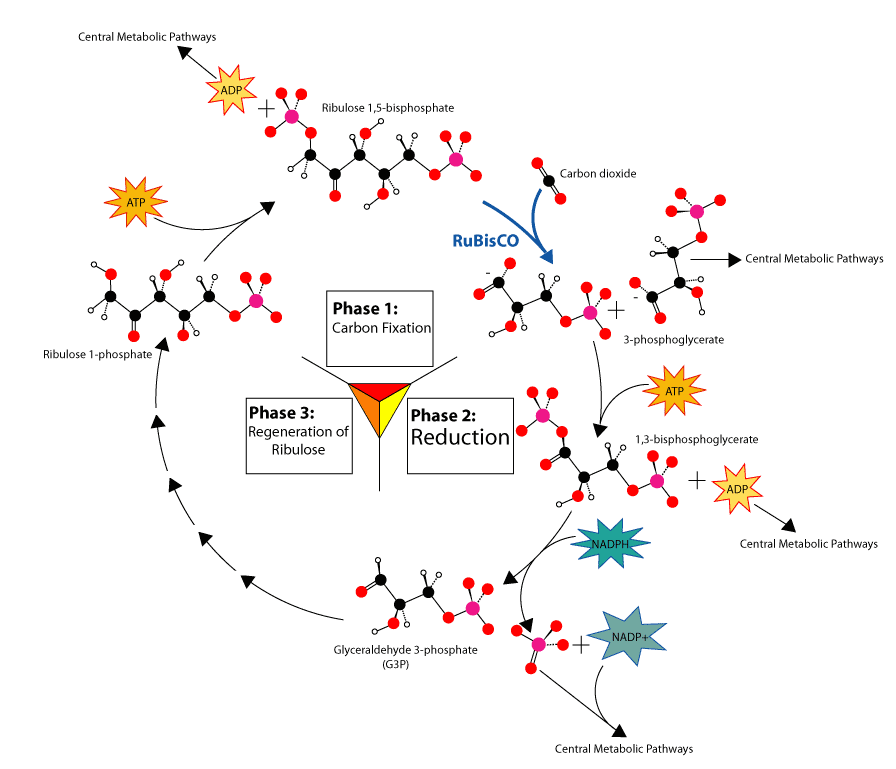Riya Patel
Biology 🧍
13 resourcesSee Units
Steps of the Photosynthetic Process and How This Drives Energy Movement and Carbon Cycling.
Do you feel as intimidated as Bart does when he sees the word photosynthesis? 😖.

GIF courtesy of GIPHY
The ABCs of Photosynthesis 🌱
❓ So, What Exactly is Photosynthesis?
Photosynthesis is the source of all energy that we get, and it is a major source of the food we eat and the oxygen we breathe. 😤

Image courtesy of Wikimedia Commons
🌎 The Wide Distribution of Photosynthesis
When most of us hear the word “photosynthesis”, we think of trees, grasses, and other plants on land. 🌲
Not an incorrect thought! However, prokaryotic and eukaryotic organisms both on land and in the sea can also undergo photosynthesis. Fun fact: 60% of global photosynthesis is carried out by land organisms, while 40% occurs in the ocean. 🌊
🧪 Redox Reaction
Photosynthesis is a reduction-oxidation (also known as redox) reaction. The equation for photosynthesis is:

In this equation, the carbon dioxide is being reduced to glucose (a sugar!), and water is being oxidized to oxygen. 💨
Note: To review some major formulas regarding photosynthesis, check out this study guide!
Capturing Sunlight (Light-Dependent Reactions) 🌻
For sunlight to be converted into ATP and NADPH, it must undergo light-dependent reactions. In these reactions, electrons flow through the photosynthetic electron transport chain, which leads to the creation of ATP and NADPH. 🌟
🌿 Chlorophyll
Chlorophyll is the primary photosynthetic pigment contained in leaves, giving them their green color. It is used in photosynthesis and comprises a large head (with a magnesium atom at the center) and long hydrocarbon tails. 🟩
These chlorophyll molecules are attached to integral membrane proteins in the thylakoid membrane. Together, they form a protein-pigment complex called a photosystem. Photosystems absorb light energy and use them to start electron transport. ⚡
🌞 Energy Transfer from the Sun
When chlorophyll absorbs visible light, one of its electrons is “excited”, and transferred to an adjacent chlorophyll. With this method of energy transfer, little heat gets lost, allowing the absorbed energy to continue moving along chlorophyll molecules. 😊🔅
The movement of energy continues until it is transferred into a complex of chlorophyll molecules called a reaction center. The reaction center is the place where light energy is turned into chemical energy. 👍
The movement of energy and the excited electron to an adjacent electron (at the reaction center) allows the photosynthetic electron transport chain to function properly. Once this electron is lost, another needs to come in place of it, and this will come from water (H2O). 💧
2️⃣ The Two Photosystems

Image courtesy of Wikimedia Commons
As said before, water is the source of electrons to power photosynthesis. A lot of energy needs to be used to remove electrons from water. There are two photosystems because one is insufficient to pull electrons from water and reduce NADP+ to NADPH. 🙅
- The first photosystem, Photosystem II, allows electrons to be pulled from water.
- The second photosystem, Photosystem I, allows electrons to be transferred to NADP+ from NADPH.
🚨 IMPORTANT: Remember that Photosystem II comes before Photosystem I! This can be confusing, especially because 1 chronologically comes before 2, but in this case, it’s the opposite!
🤺 Other Protein Complexes
Some other protein complexes in the Photosynthetic Electron Transport Chain (other than Photosystem II and I) are
- plastoquinone
- the cytochrome-b6f complex
- plastocyanin
- ferredoxin-NADP+.
The movement of electrons is summarized below:
Photosystem II ⟶ Plastoquinone ⟶ Cytochrome-b6f complex ⟶ Plastocyanin ⟶ Ferredoxin-NADP+ ⟶ ATP Synthase
🏭 ATP Synthesis
So, you might be wondering, how does this movement of electrons lead to the creation of ATP or energy? At the end of the photosynthetic electron transport chain lies ATP synthase, a transmembrane protein stimulated by creating a proton gradient. When electrons are moved along the chain, protons accumulate in the lumen of the thylakoid. You may ask, how does this happen? 💥
Firstly, when water is oxidized, protons and oxygen gas are released into the lumen.
Secondly, plastoquinone and the cytochrome-b6f complex work together as a proton pump in cellular respiration. These two processes together are what cause the lumen to be proton-heavy. From here, the protons in the lumen are taken up by ATP synthase and pumped back towards the stroma, which causes ATP to synthesize from ADP and inorganic phosphate. 👆
The Calvin Cycle (Light-Independent Reactions) 🎡
🥜 Overview: In a Nutshell
Within the Calvin Cycle, 15 chemical reactions take place to make carbohydrates from carbon dioxide. These three reactions are sorted into three steps: Carboxylation, Reduction, and Regeneration.

Image courtesy of Wikimedia Commons
1️⃣ Carboxylation
This is where most of the raw materials are inputted. In this step, carbon dioxide is added to a 5% carbon sugar called RuBP. The enzyme that catalyzes this reaction is rubisco. This reaction results in a spontaneous production of a 6-carbon compound which immediately breaks into two 3-phosphoglycerate molecules, or 3-PGA. ➕
2️⃣ Reduction
The carbon compounds made by rubisco need to be reduced to increase energy output. In this case, NADPH transfers electrons which will help carbon dioxide be synthesized into carbohydrates. 📈
When 3-PGA is reduced, two reactions occur:
- ATP gives one of its phosphates to 3-PGA
- NADPH gives 2 electrons and 1 proton to the compound, releasing one phosphate group
When looking at this, we can see that we'll need 2 ATP and 2 NADPH for each molecule of carbon dioxide added in the cycle (for this step). 👐
The energy transfer in these reactions yields in the formation of a 3-carbon carbohydrate called triose phosphate. These are the “true” products of light-independent reactions. For each six triose phosphates created, only one can be taken out of the Calvin Cycle, as they are still needed to regenerate RuBP in the next step. ✅
3️⃣ Regeneration
Twelve of the chemical reactions mentioned above occur in this step. During regeneration, carbon atoms are rearranged to form 5-carbon RuBP molecules from 3-carbon triose phosphates. ATP is needed for this step, causing the entire Calvin Cycle to require 3 ATP and 2 NADPH per carbon dioxide molecule in total. 🔄
Closing Remarks 👋
Phew! That’s all for photosynthesis! Although this is an extensive topic, it'll be easier to remember with proper review and breaking each step down! 🎉
If you need more review, I highly suggest you check out this fantastic video resource! For those of you who are visual learners, check out this amazing study guide! 👀
Connect with other students studying Biology with Hours
Browse Study Guides By Unit
🔬Cells
⚙️Biological Processes
Photosynthesis
- Steps of the Photosynthetic Process and How This Drives Energy Movement and Carbon Cycling.
- ❓ So, What Exactly is Photosynthesis?
- 🧪 Redox Reaction
- 🌿 Chlorophyll
- 🌞 Energy Transfer from the Sun
- 2️⃣ The Two Photosystems
- 🏭 ATP Synthesis
- 🥜 Overview: In a Nutshell
- 1️⃣ Carboxylation
- 2️⃣ Reduction
- 3️⃣ Regeneration
🧍Human Body Structures
👨👩👦Genetics
🐒Evolution

Fiveable
Resources
© 2023 Fiveable Inc. All rights reserved.